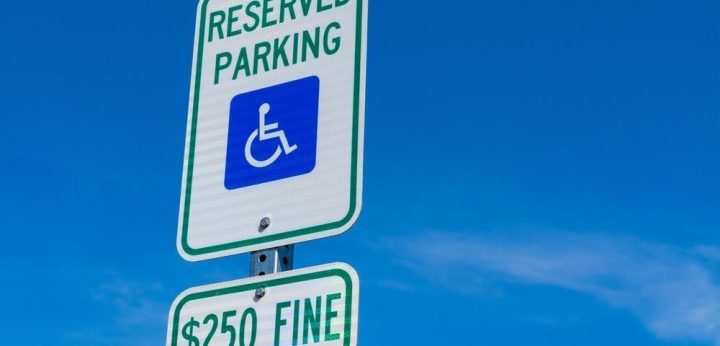My Disabled Parking Placard Has Expanded My World

In the not-too-distant past, I hated shopping. Walking across parking lots and winding my way through store aisles was incredibly tiring, thanks to my Ehlers-Danlos syndrome (EDS) and comorbid conditions.
Prolonged standing and walking led to severe abdominal pains and vertigo. Sometimes I would have to squat in the middle of an aisle or checkout line to keep from fainting. After paying, I would have to trek to my truck, dodging distracted drivers and stopping to catch my breath every so often. It was a miserable experience. Running an errand or shopping for groceries could sideline me for the rest of the day.
My world seemed to shrink around me
My body’s resources were too limited to shop as a means of entertainment. Outings were planned with efficiency of motion in mind, and I settled for brands available at the store where I was shopping. I couldn’t justify parking, walking, and wandering about another store to buy an item that I preferred. I made do.
Shopping online saved time and energy, but it disconnected me from my community. I missed human interaction and the exchange of pleasantries that accompanied each transaction. I felt guilty for not supporting local businesses — or businesses that employed people living in my community.
Disabled parking placard to the rescue
At first, I was embarrassed to admit to my doctor that I wanted a disabled parking placard. I had read stories about people with invisible disabilities who were shamed for parking in reserved spaces with their placards. I did not require crutches and was not confined to a wheelchair. I could get in and out of places, albeit with difficulty and with resulting pain and fatigue.
My doctor told me that I met the criteria for a placard, and she was more than willing to complete the paperwork. The process was simpler than I had imagined. I received a hang tag in the mail, along with an identification card in case I needed to prove that I was the authorized user.
My first outing with my placard was to shop for groceries. I marveled at how much easier it was without the long walk across the parking lot. Trips to the pharmacy and other one-and-done destinations were less stressful. I started shopping locally again. Eventually, I began to reconnect with others. I no longer felt as isolated or as lonely.
Membership has its privileges
When I took my children to an amusement park, we parked in the reserved spots near the entrance. I jokingly recited the line from an old credit card advertisement: “Membership has its privileges.” That has become my go-to phrase on days when I don’t feel well and still have to go out; at least I’m able to snag a sweet parking spot.
Having a disabled parking placard does not negate the difficult issues brought on by EDS, but it does take away some of the sting. And it has allowed me to reclaim some of my freedom.
Please share your experiences with a disabled parking placard in the comments below. If you have one, has it helped? What can you do now that you couldn’t previously?
***
Note: Ehlers-Danlos News is strictly a news and information website about the disease. It does not provide medical advice, diagnosis, or treatment. This content is not intended to be a substitute for professional medical advice, diagnosis, or treatment. Always seek the advice of your physician or other qualified health provider with any questions you may have regarding a medical condition. Never disregard professional medical advice or delay in seeking it because of something you have read on this website. The opinions expressed in this column are not those of Ehlers-Danlos News or its parent company, BioNews Services, and are intended to spark discussion about issues pertaining to Ehlers-Danlos.







Comments